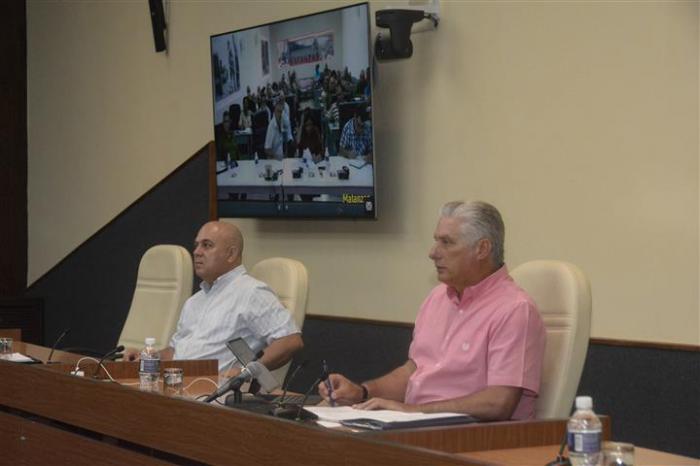
Funeral ceremonies are being prepared in Cuba for those who died in the fire in Matanzas.
The details were discussed in a meeting headed by Cuban President Miguel Díaz-Canel with authorities from the Caribbean nation and from the territory of Matanzas, the site of the Presidency reported.
It was not possible to absolutely identify the remains of the victims of the fire at the Supertanker Base in Matanzas, said Dr. Jorge González Pérez, who was in charge of the multidisciplinary group in charge of the search and identification of the 14 people, at a press conference. missing in the accident.
The President of the Cuban Society of Legal Medicine explained that, as a result of the expert work around tank 51 (known as tank two), 754 small bone fragments were recovered, divided into 14 groups, which were transferred to the laboratory for characterization.
Some isolated objects such as flashlights, shoe soles, a piece of chain, among other items, were also recovered from the site.
According to the medical examiner, there are three ways to achieve an absolute identification: fingerprint matching, dental analysis, and DNA; in this case the first two did not come, and the last one was also impossible due to the high temperatures to which the remains were subjected; a conclusion endorsed by the international experts consulted. That is, it cannot be established to which person they belong.
Before this information was made public – González Pérez clarified – individual interviews were carried out with all the families, whose questions regarding the investigation were answered; they thanked the honesty of the scientists and experts involved.
To illustrate the adverse nature of the investigation scenario, the doctor said that it is estimated that during the fire, in its center, temperatures could have reached between 1,000 and 2,000 degrees Celsius; while a corpse incinerator oven reduces a human body to ashes in two hours, at 800 degrees Celsius. Therefore, not finding anything was one of the previous models.
It was also assessed that perhaps a body had remained protected by a collapsed structure or under liquid. The investigations carried out revealed that 30 people were in the area of tank 51 at the time of the explosion. Of these, 15 were interviewed, which allowed, together with the videos provided and the operational information, to make a close-up of the location of the subjects and the techniques.
When accessing the land, aspects such as the inclination of the surface, the flow of movement and the solidification of the crude oil (coking) were taken into account. Four quadrants were established, divided in turn into sectors and grids of five by five meters. Pickaxes, shovels and jackhammers were needed to work on coke.
The specialist mentioned, among the various authorities contacted, the Forensic Science Network coordinated by the International Red Cross; and he emphasized that there is a consensus that it is impossible to advance further with the technology that exists in the world today. Likewise, he highlighted the preparation and expertise that exists in Cuba in this type of work.
(Taken from Granma)